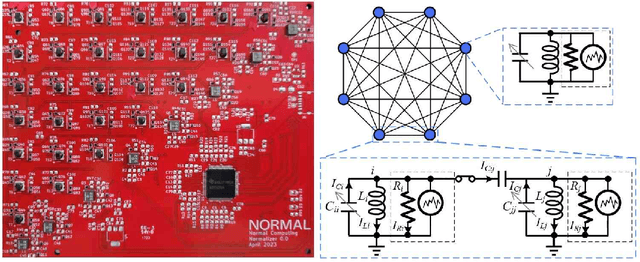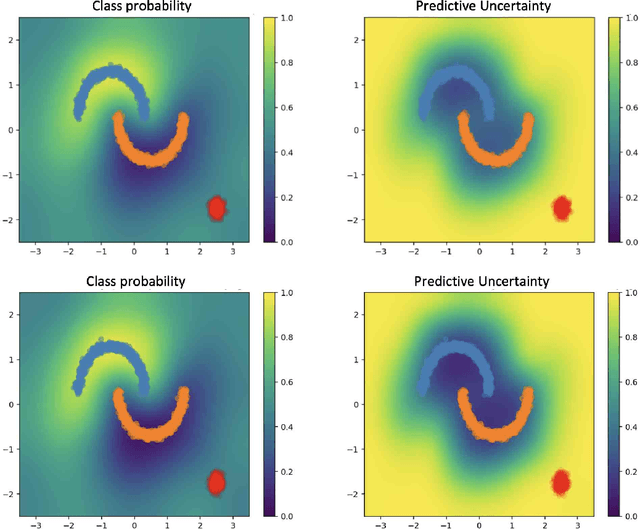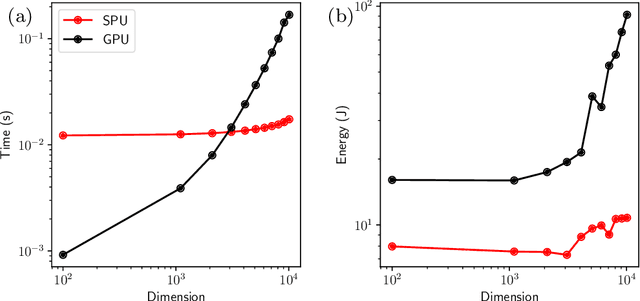Mohammad Abu Khater
Thermodynamic Computing System for AI Applications
Dec 08, 2023



Abstract:Recent breakthroughs in artificial intelligence (AI) algorithms have highlighted the need for novel computing hardware in order to truly unlock the potential for AI. Physics-based hardware, such as thermodynamic computing, has the potential to provide a fast, low-power means to accelerate AI primitives, especially generative AI and probabilistic AI. In this work, we present the first continuous-variable thermodynamic computer, which we call the stochastic processing unit (SPU). Our SPU is composed of RLC circuits, as unit cells, on a printed circuit board, with 8 unit cells that are all-to-all coupled via switched capacitances. It can be used for either sampling or linear algebra primitives, and we demonstrate Gaussian sampling and matrix inversion on our hardware. The latter represents the first thermodynamic linear algebra experiment. We also illustrate the applicability of the SPU to uncertainty quantification for neural network classification. We envision that this hardware, when scaled up in size, will have significant impact on accelerating various probabilistic AI applications.
Sub-1ms Instinctual Interference Adaptive GaN LNA Front-End with Power and Linearity Tuning
Nov 27, 2022



Abstract:One of the major challenges in communication, radar, and electronic warfare receivers arises from nearby device interference. The paper presents a 2-6 GHz GaN LNA front-end with onboard sensing, processing, and feedback utilizing microcontroller-based controls to achieve adaptation to a variety of interference scenarios through power and linearity regulations. The utilization of GaN LNA provides high power handling capability (30 dBm) and high linearity (OIP3= 30 dBm) for radar and EW applications. The system permits an LNA power consumption to tune from 500 mW to 2 W (4X increase) in order to adjust the linearity from P\textsubscript{1dB,IN}=-10.5 dBm to 0.5 dBm (>10X increase). Across the tuning range, the noise figure increases by approximately 0.4 dB. Feedback control methods are presented with backgrounds from control theory. The rest of the controls consume $\leq$10$\%$ (100 mW) of nominal LNA power (1 W) to achieve an adaptation time <1 ms.
Multi-Octave Interference Detectors with Sub-Microsecond Response
Jul 03, 2022



Abstract:High-power interferers are one of the main hurdles in wideband communication channels. To that end, this paper presents a wideband interferer detection method. The presented technique operates by sampling the incoming signal as an input, and produces the frequency and the power readings of the detected interferer. The detection method relies on driving an open circuit stub, where the voltage is proportional to the power of the interferer, and the standing wave pattern is an indicator of its frequency. This approach is feasible over multi-octave bandwidth with a wide power dynamic range. The concept is analyzed for design and optimization, and a prototype is built for a proof-of-concept. The measured results demonstrate the ability to detect an interferer within the 1--16 GHz frequency range, with a power dynamic range between -20 to 20 dBm. The detection concept is also fitted with different types of tunable bandstop filters (BSFs) for automatic detection and suppression of the interferer if its power exceeds a programmable threshold. With a measured response time of 500 ns, the presented method is a technology enabler for wideband receivers.
 Add to Chrome
Add to Chrome Add to Firefox
Add to Firefox Add to Edge
Add to Edge